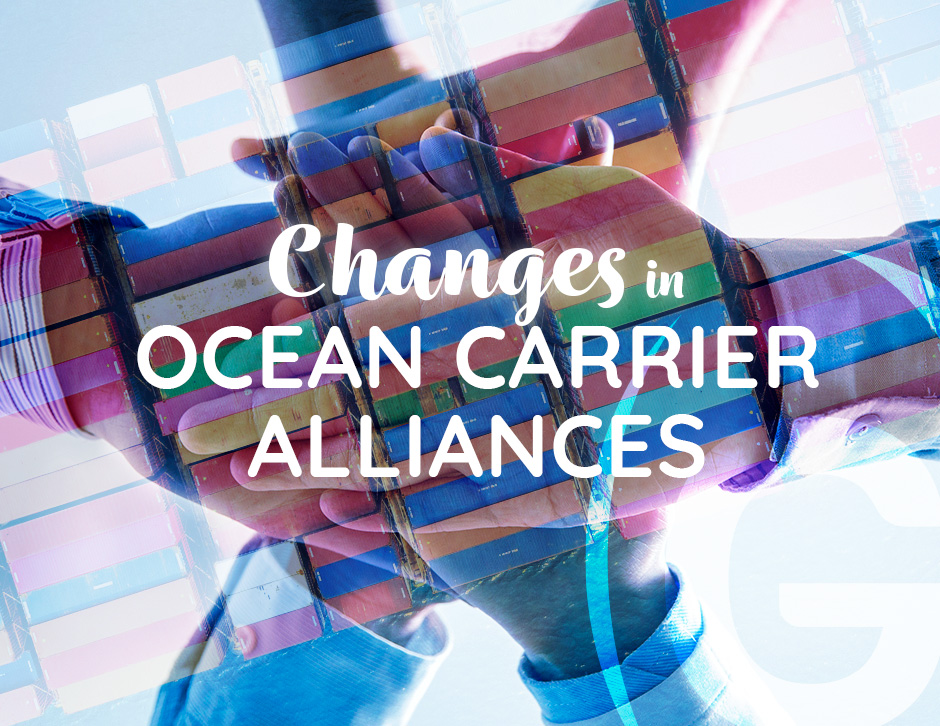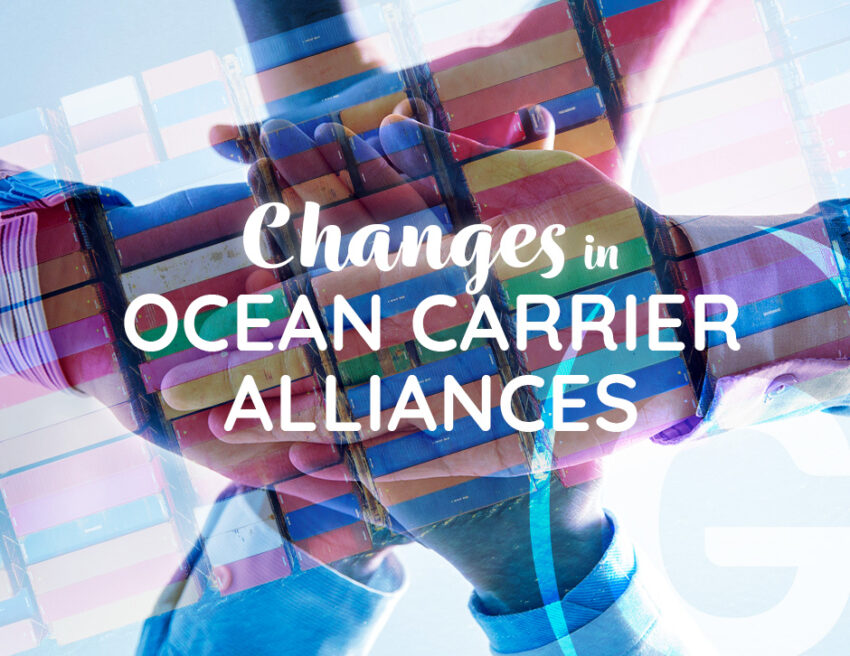The ocean freight sector is on the brink of another transformative year, with new alliances, shifting trade routes, and geopolitical uncertainties reshaping global supply chains. As major ocean carriers realign their partnerships and expand their fleets, freight forwarders, shippers, and logistics service providers must stay ahead of these changes to maintain efficiency and profitability.
With alliances like the Premier Alliance and Gemini Cooperation taking shape, while MSC pushes forward independently, the competition for market dominance is fiercer than ever. Additionally, geopolitical tensions in the Red Sea and evolving trade policies continue to influence global shipping strategies. This blog delves into the key alliances in the ocean freight sector of 2025, their strategic moves, and the critical industry trends that will define the year ahead.

The Formation of New Shipping Alliances in the Ocean Freight Sector
The Premier Alliance: ONE, Yang Ming, and HMM
A significant shift in the industry landscape comes with the formation of the Premier Alliance, composed of Ocean Network Express (ONE), Yang Ming, and Hyundai Merchant Marine (HMM). This alliance is an evolution of the former THE Alliance, which saw Hapag-Lloyd exit to join forces with Maersk. ONE, established in 2016, is an integration of three Japanese shipping companies—Kawasaki Kisen Kaisha (K-Line), Mitsui O.S.K. Lines (MOL), and Nippon Yusen Kaisha (NYK)—headquartered in Singapore. Operating a fleet of over 240 vessels with a capacity of 1.9 million TEUs, ONE has a strong presence on major east-west trade routes.
The alliance strategically owns container terminals in North America and Europe, including TraPac (Oakland and Los Angeles), Yusen Terminals (Los Angeles), and Rotterdam World Gateway (Netherlands). In Southeast Asia, ONE operates Magenta Singapore Terminal. The alliance is set to deploy three trans-Pacific Asia-Pacific Northwest services and five Asia-East Coast North America voyages.
The Gemini Cooperation: Maersk and Hapag-Lloyd
Another major shakeup in the industry is the Gemini Cooperation, a strategic partnership between Denmark’s Maersk and Germany’s Hapag-Lloyd. The two companies parted ways with previous alliances to create a network focused on schedule reliability, targeting a 90% on-time performance rate. The Gemini network will operate with 29 mainliner services and interregional shuttles, reducing port calls per service to enhance efficiency. The hub-and-spoke model, inspired by airline logistics, is expected to improve cargo flow on key trans-Pacific, trans-Atlantic, and Asia-Europe routes.
Maersk, the second-largest container shipping company, operates 726 vessels with a total capacity of 4.5 million TEUs (14% market share), while Hapag-Lloyd operates 270 vessels with a capacity of 1.9 million TEUs.
MSC: Going Solo with Market Domination
Mediterranean Shipping Company (MSC), the world’s largest container line, is moving forward independently after the dissolution of the 2M Alliance with Maersk. With a fleet of 887 vessels and a market share exceeding 20%, MSC is outpacing its competitors by aggressively expanding its capacity.
The Geneva-based carrier has 130 new vessels on order, expected to add 2 million TEUs, a 35% increase in capacity. To support this growth, MSC has even reactivated a Chinese mega-shipyard that had been idle since 2014.
The Impact of Geopolitics on Shipping Routes
The Red Sea and Suez Canal Crisis
The Red Sea, a vital trade corridor, became a global hotspot in late 2023 when Houthi rebels in Yemen began attacking merchant vessels. In response, most major carriers diverted their routes around the Cape of Good Hope, adding up to 14 extra days to transit times. This disruption unexpectedly benefited the industry, as the reduced capacity pushed freight rates higher, leading to record profits in 2024.
However, the changing geopolitical landscape in 2025, including a potential ceasefire in the Israel-Hamas conflict and instability in Iran, is altering the equation. If attacks subside and shipping lines return to the Suez Canal, analysts predict that freight rates could drop by as much as 70%, impacting carrier profitability.
Maersk has announced a gradual reintroduction of Suez routes, but security concerns remain high.
The Expansion of Ocean Alliance
The Ocean Alliance, composed of CMA CGM, Evergreen, Cosco, and OOCL, has extended its agreement until 2032. The alliance is a major player in the industry, with:
- CMA CGM: 662 ships, 3.9 million TEUs (third-largest globally)
- Cosco: 512 ships, 3.3 million TEUs (fourth-largest)
- Evergreen: 224 ships, 1.8 million TEUs (seventh-largest)
Cosco, in particular, is aggressively expanding, with 52 new vessels on order, increasing capacity by 26%.
OOCL has announced six trans-Atlantic services covering the U.S. East Coast, West Coast, and Gulf Coast. By April, the alliance will launch 22 rotations servicing ports across North America and Canada.
The MSC-ZIM Partnership
While some carriers have left alliances, MSC and Israel’s ZIM are embarking on a new long-term trans-Pacific partnership. Effective February 2025, the agreement will enhance trade connectivity between Asia, the U.S. Gulf Coast, and East Coast hubs.
What Lies Ahead for the Industry?
The reshuffling of container shipping alliances in 2025 underscores a broader trend toward consolidation, efficiency, and geopolitical adaptability. As the Premier Alliance, Gemini Cooperation, and Ocean Alliance shape the industry’s future, carriers must navigate rising competition, geopolitical uncertainty, and evolving trade regulations.
Key developments to watch include:
- The impact of the Suez Canal reopening on freight rates
- The effectiveness of Gemini’s reliability-focused approach
- MSC’s aggressive expansion and market dominance
- The success of the Ocean Alliance’s extended cooperation
- How geopolitical tensions in Asia and the Middle East affect global trade
In an industry where timing and strategy are everything, 2025 is poised to be a defining year for global container shipping.


